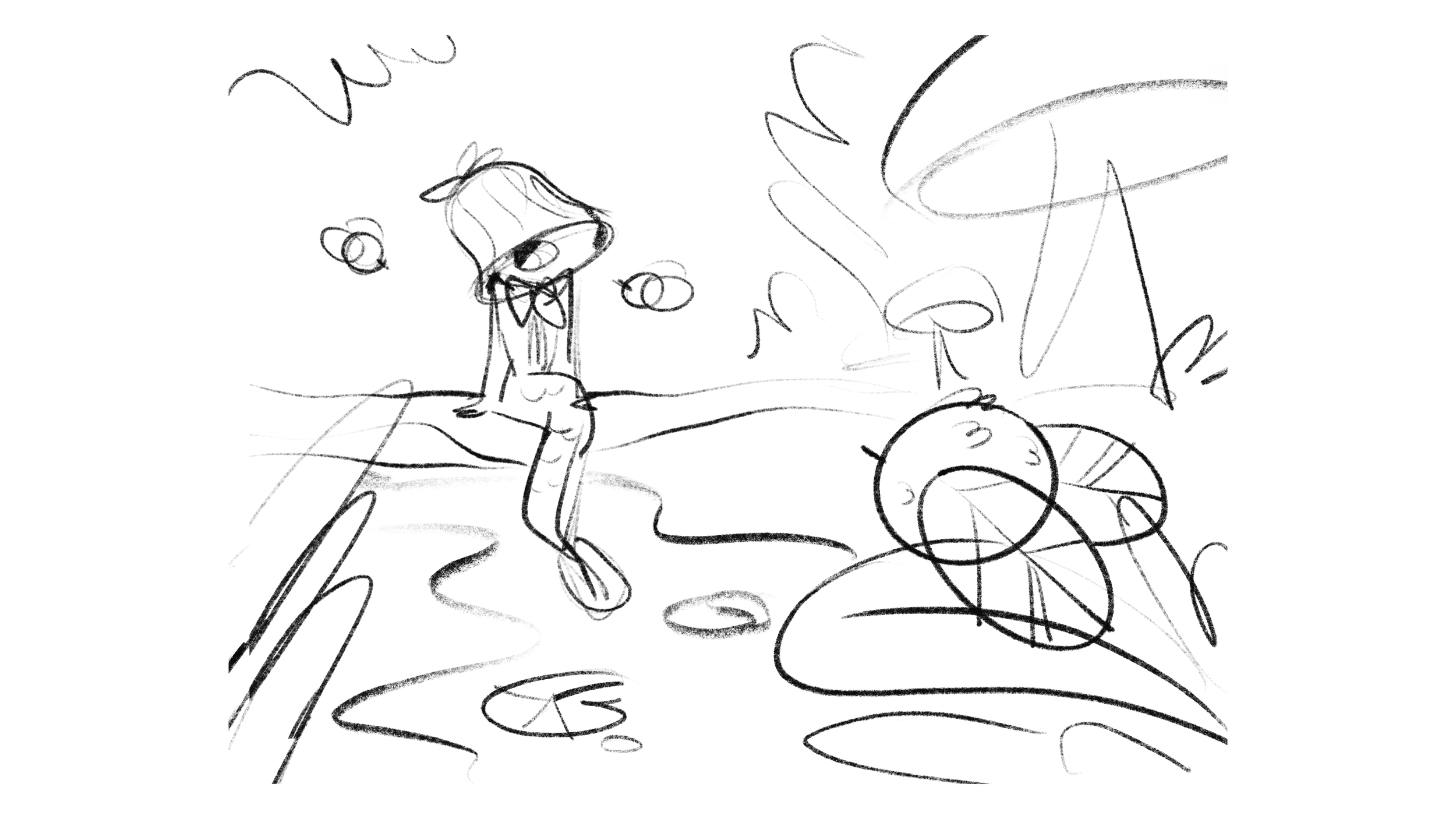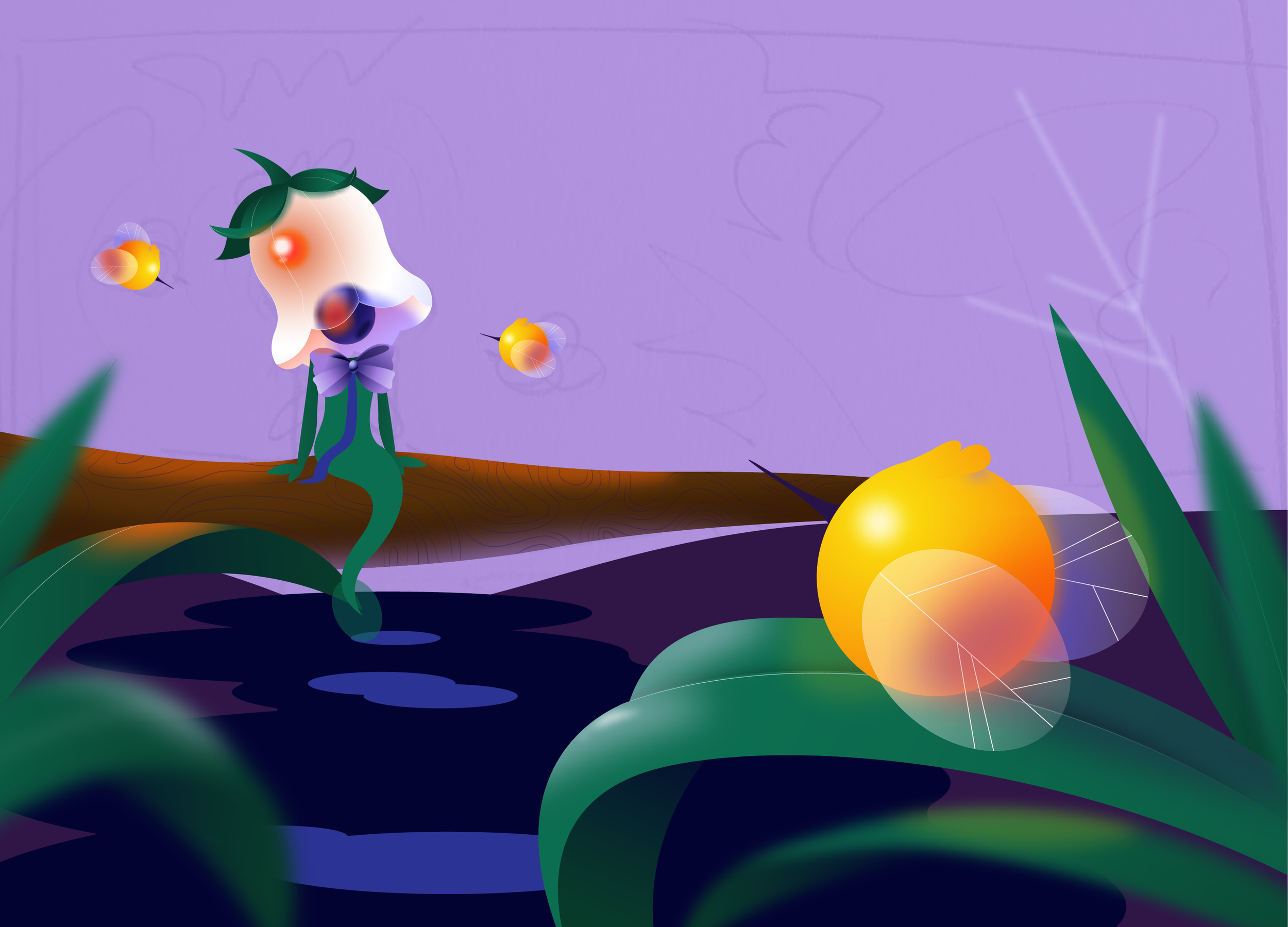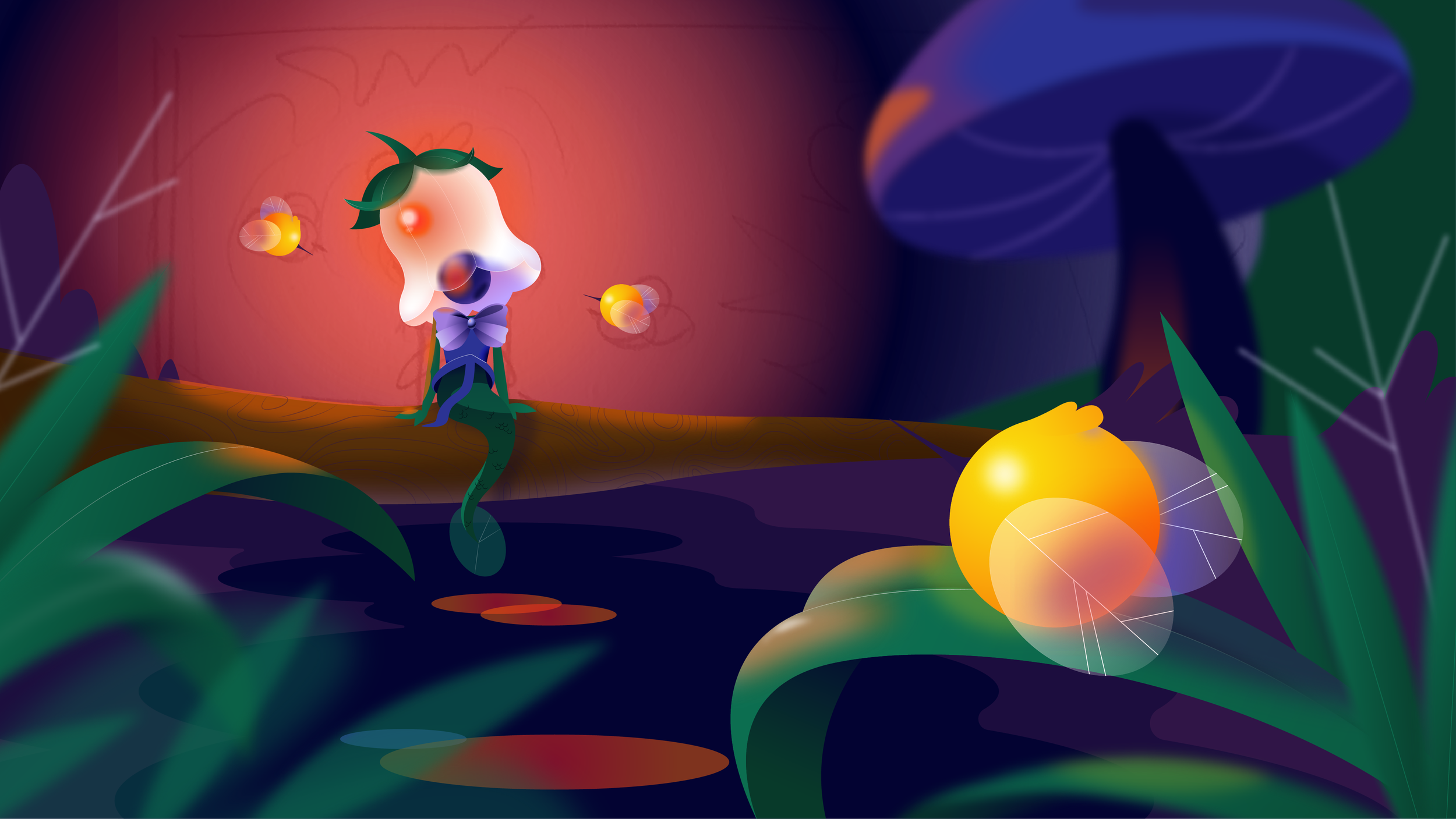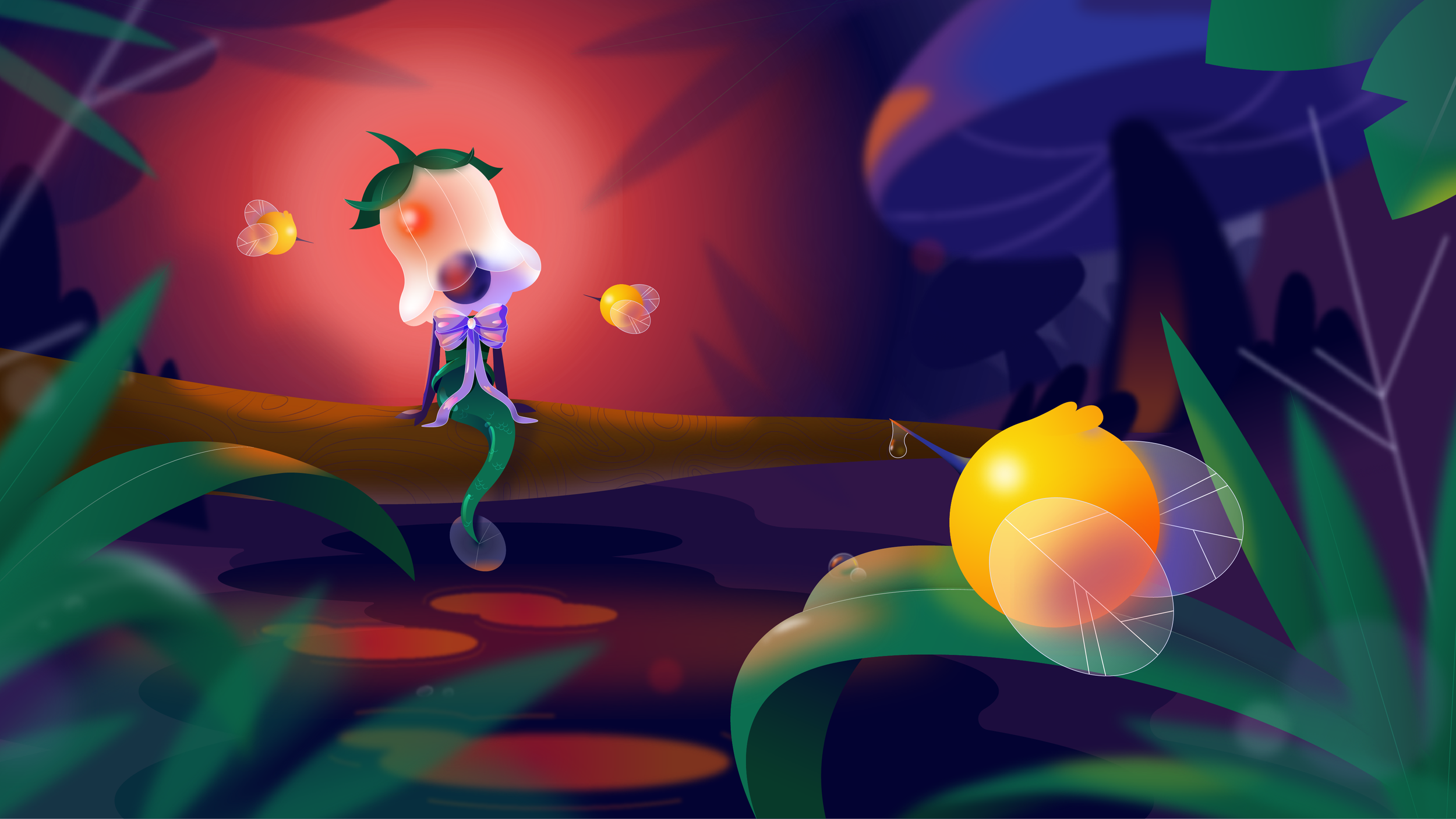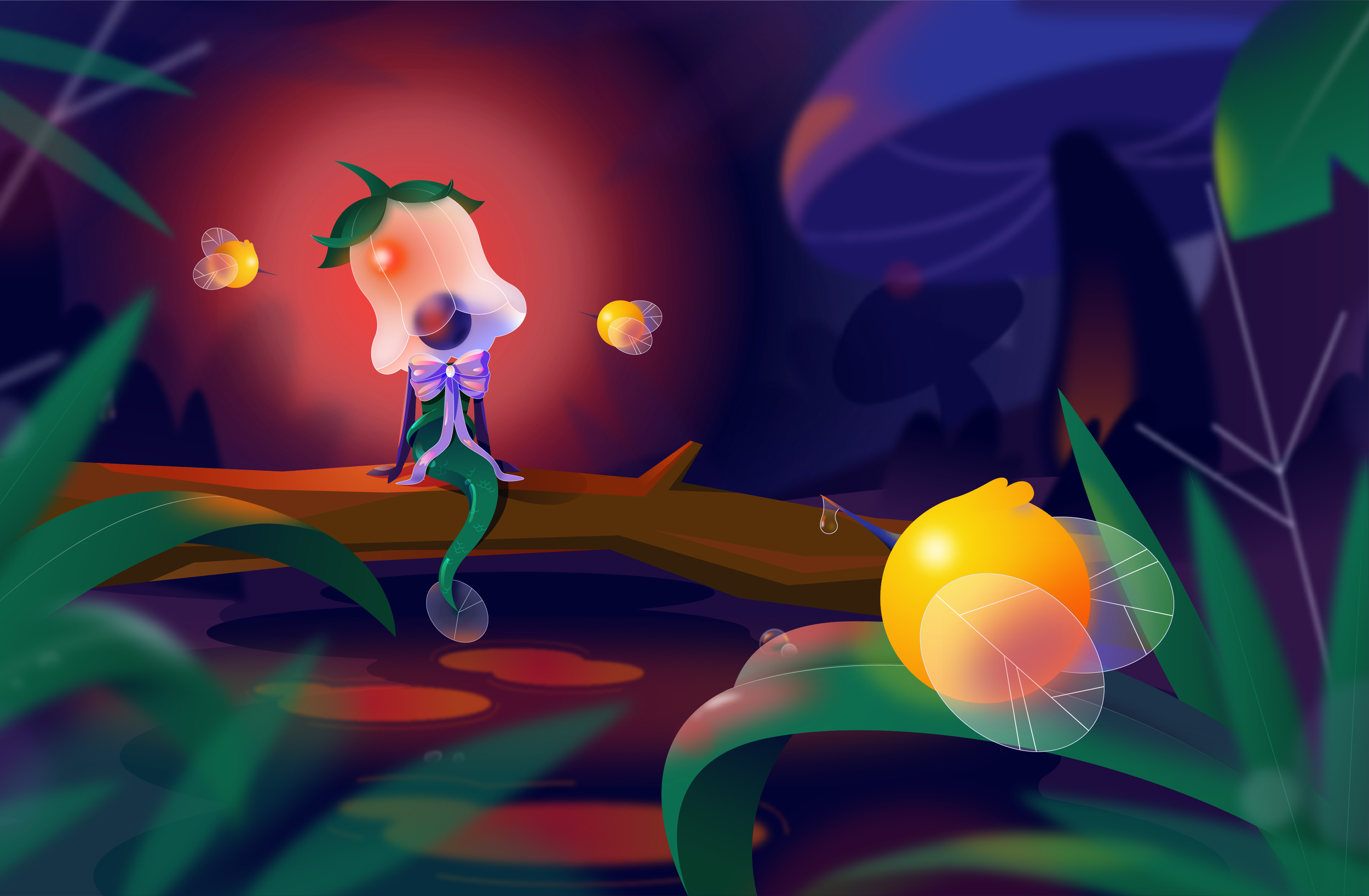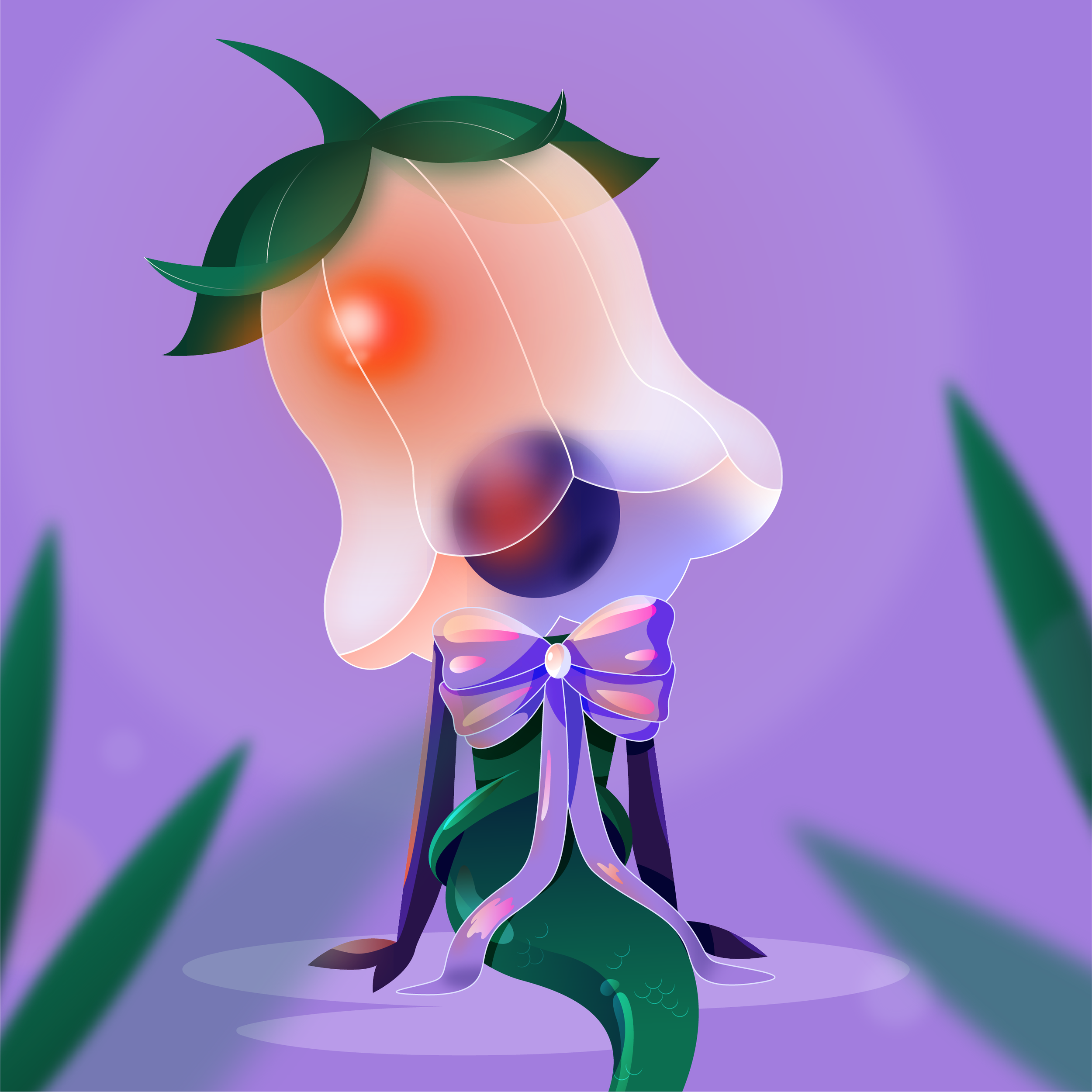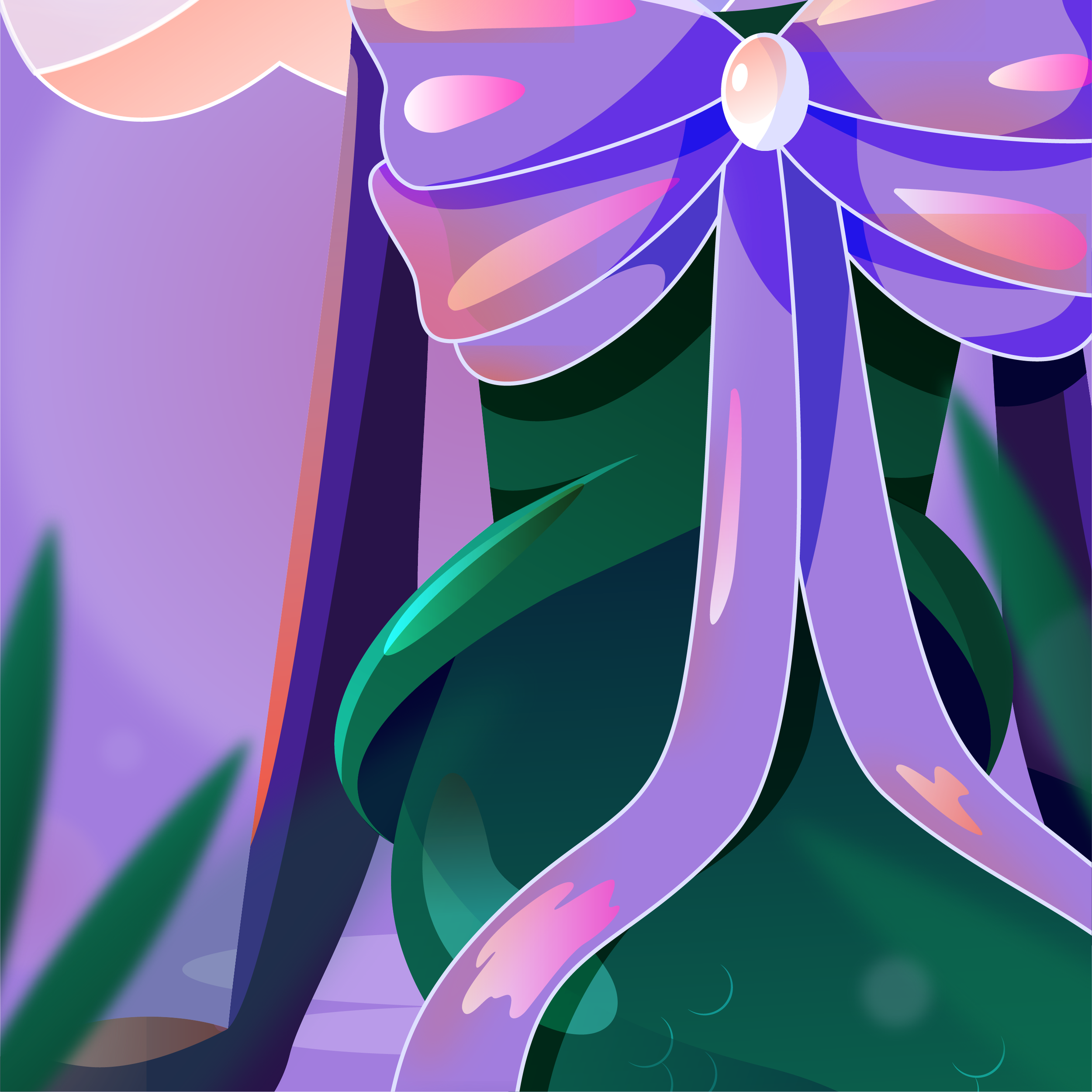lily of forest
idea generation
Over time I have developed a habit of having over-simplified, perhaps even solid background in my illustrations. So I wanted to try and create something more atmospheric and rich in details.
As I am a fan of fantasy creatures and worlds, I have decided to create a Lily of Valley flower character, only this time combined with a mermaid. So I came up with an extraordinary Lily of Forest. Whenever an idea pops up in my head I jump straight to visualizing it. Whenever you start thinking wether you should take the opportunity and develop the idea, you’'ll never do anything. So the right thing here is to start right at the moment when the idea bulb lights in your head!
inspiration
I have already imagined what kind of environment I was aiming to create. It was in my head from the start. All that I needed was to find references and inspirational materials for developing my ideas further.
Usually, when I am in search of inspiration, I use as many sources as I can. At the end I gather very different pieces that are yet somehow very relevant to the visual idea in my head.
Moodboard of Inspiration
Sketches
The easiest way for me to develop a composition and the design of the elements that the illustration is going to have is on paper. Even though it has been many years now that I have switched to digital devices, I still do all my sketches and idea development processes on paper. It feels to me more natural.
After I finish the sketches on paper, I transfer them to digital programs, like Procreate or Photoshop.
visual development
When you have something visualized in your mind it is pretty easy to get lost on the way of getting to that. That’s why I always capture not only the silhouettes but the mood, colors, little details. I kind of blur the whole vision in my mind to see the mood of the frame and then try to transfer it to paper or artboard.
Visual development is one of the trickiest processes in production. While you try to generate a unique style, you might lose the overall consistency. So it is important to lay back from time to time in this process, and compare the details you’ve created on an empty canvas. This usually helps me to identify the not matching details or effects, which later I remove or replace.
final illustration
As I have limited myself with simplified backgrounds previously, I really didn't know where to stop in this case. This might have never be a finished piece as I wanted to detail each fragment of the composition. But at some point I have realized that I need to stop and consider the illustration complete. Even now that I look at it, I see so many things that I would like to change. But I’ll just keep those adjustments in mind when working on my next projects.


